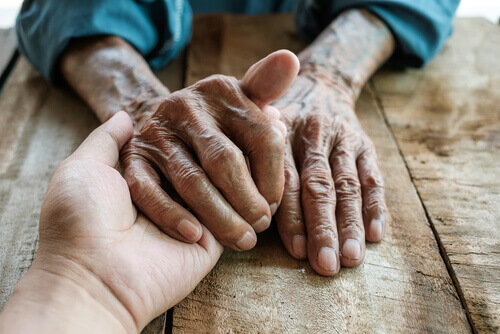The Lawton Brody IADL Scale to Assess Independence in the Elderly


Written and verified by the psychologist Elena Sanz
One of the main consequences of aging is the progressive loss of autonomy. The deterioration of physical and mental health means that the elderly become increasingly dependent, especially if they suffer from some type of dementia or brain damage.
The Lawton-Brody Instrumental Activities of Daily Living Scale (IADL) allow the detection of the first signs of difficulty and lack of autonomy in an individual.
The IADL is one of the most widely used international scales for this purpose. It allows the measurement of the degree of independence in elderly people, whether or not they’re institutionalized. It does so through the evaluation of the instrumental activities of daily living.

The instrumental activities of daily living
When analyzing dependency, we must look at the individual’s ability to carry out the activities of daily living. They can be divided into two groups: basic and instrumental:
- The first group refers to the most basic aspects of personal care. For example, eating, toilet training, and mobility.
- Instrumental activities are more complex tasks, but no less important for an autonomous life. They include activities that require the ability to make decisions and solve problems. The IADL scale deals with these.
The Lawton Brody IADL scale
This simple but complete screening instrument requires no more than five minutes to complete. It consists of eight items with various response alternatives. Together, they assess the ability of the elderly to carry out these tasks independently.
The response options have two scores. A score of one means the individual performs the tasks independently. A score of zero means they can’t do them and are completely dependent.
The total score is obtained by adding the values obtained in each item. It ranges between 0 (totally dependent) to eight (absolutely independent).
Depending on each individual case, the scale is either completed by the patient themselves or a trustworthy caregiver (if they’re not capable).
You might also like to read: Helping the Elderly Stay in Their Own Homes
Aspects that are evaluated
Ability to use the telephone
- Uses the telephone on their own initiative (1 point)
- Dials a few well-known numbers (1)
- Answers the phone, but doesn’t dial (1)
- Doesn’t use the phone at all (0)
Shopping
- Makes all their necessary purchases independently (1)
- Buys small things independently (0)
- Needs to be accompanied to make any purchase (0)
- Totally unable to shop (0)
Food preparation
- Plans, prepares, and serves meals independently (1)
- Prepares meals if given the ingredients (0)
- Heats and serves meals, but doesn’t maintain an adequate diet (0)
- Needs meals prepared and served (0)
Housekeeping
- Takes care of the house alone or with occasional help (1)
- Does light tasks like washing up or making the bed (1)
- Performs light tasks, but doesn’t maintain acceptable cleanliness (1)
- Needs help with all tasks (1)
- Doesn’t participate in any housekeeping tasks (0)
Laundry
- Does all their personal laundry (1)
- Washes small items (1)
- Needs someone else to do the laundry (0)
Mode of transportation
- Travels alone by public transport or uses own car (1)
- Is able to take a taxi, but doesn’t use any other means of transport (1)
- Travels by public transport accompanied by another person (1)
- Only travels by taxi or car with the help of others (0)
- Doesn’t travel (0)
Responsibility for own medications
- Takes their medication at the right time and in the correct dosage (1)
- Takes medication if the dose is previously prepared (0)
- Is unable to administer their medication (0)
Ability to handle finances
- Manages their financial affairs independently (1)
- Manages their daily affairs, but needs help with large purchases and going to the bank (1)
- Unable to handle money (0)

The usefulness of the IADL
This instrument has proven to be effective in the objective assessment of dependency in the elderly. Its main advantage is that it not only offers a total score, approximating the degree of deterioration in the individual but also gives information on the areas in which the deterioration has occurred. In other words, it not only gives useful information for the diagnosis, but also for possible intervention.
This last point is essential for designing and implementing a therapeutic plan. It provides the individual with new strategies to preserve their independence.
Finally, it should be noted that the scale has proven to be more reliable when applied to women. That’s because many of the aspects it evaluates have traditionally been assigned to females.
All cited sources were thoroughly reviewed by our team to ensure their quality, reliability, currency, and validity. The bibliography of this article was considered reliable and of academic or scientific accuracy.
- Ferrín, M. T., González, L. F., & Meijide-Míguez, H. (2011). Escalas de valoración funcional en el anciano. Galicia Clínica, 72(1), 11-16.
- Ayuso, D. M. R. (2007). Actividades de la vida diaria. Anales de Psicología/Annals of Psychology, 23(2), 264-271.
- Graf, C. (2009). The Lawton instrumental activities of daily living (IADL) scale. The gerontologist, 9(3), 179-186.
This text is provided for informational purposes only and does not replace consultation with a professional. If in doubt, consult your specialist.








